Results
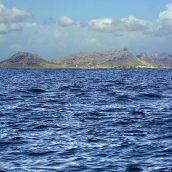
Santa Luzia (35 km2), the smallest island in the archipelago of Cape Verde, is part of the Barlovento group of islands and is currently uninhabited. At 395 m, Toponha or Monte Grande is the highest point and is located at around 9 km from ...
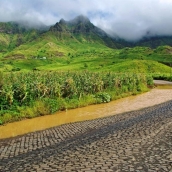
Santiago is the capital island and the largest (991 km2) in the archipelago of Cape Verde. It is distinguished by a broad network of ravines and valleys, whose source lies in the two massifs or mountain chains of Serra do Pico da Antónia ...
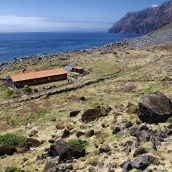
The Desertas Islands are a small group of uninhabited islets located off Madeira. Deserta Grande (10 km2) is the largest, followed by Ilhéu Chão (0.4 km2) and Bugio (3 km2). From afar, these long and narrow islands rise up like sharp ...

Madeira stretches over 736 km2 and is the capital island of the archipelago of the same name. Extremely rugged and scored by deep ravines, it has numerous calderas, or cauldron-like cavities, and coastal escarpments. Flatlands are few, ...
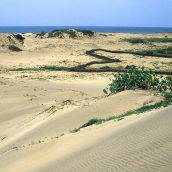
Maio (269 km2) is relatively flat and similar to Sal and Boavista, where wide stony plains, dune fields and sandy beaches are the main features. The highest point is Monte Penoso, at 436 m altitude. Since Maio is one of the oldest islands ...
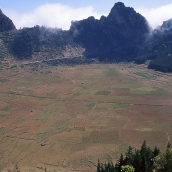
Santo Antão is at once the westernmost and northernmost island of Cape Verde, as well as being the second largest (779 km2) and second highest island (Tope da Coroa, 1,979 m) in the archipelago. Ribeira Grande, the capital, is located on ...
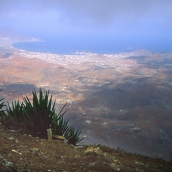
São Vicente (227 km2) is second in importance after Santiago and is considered the ‘capital’ of the Barlovento Islands. At 774 m, Monte Verde is the highest point and Mindelo the island capital. The landscape is relatively flat, ...
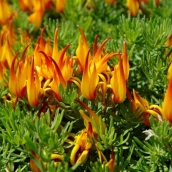
Scrambling shrub, leaves linear, 10-18 mm long, pubescent and pale green. Flowers are yellow, with red-orange tips. This native of Tenerife is restricted to two locations on the north coast: El Sauzal and Roque de Tierra (Anaga). It has, ...
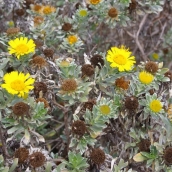
Small, compact densely branched, up to 60 cm tall; stems silvery and leaves clustered near the tip, oblanceolate, silvery grey-green and very smooth to the touch. Flowers are yellow, numerous and arranged in heads of 2-3 cm across. A ...
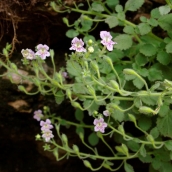
Shrublet, woody at base, leaves opposite or fasciculate, up to 2.5 cm long, rather fleshy, spathulate or round, very pubescent (as are the stems), margins dentate-crenate. The flowers are pale pink, with dark veins (pink), and arranged ...
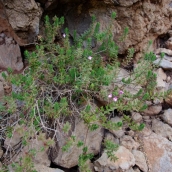
Suberect subshrub with long branches, up to 20 cm tall. Leaves large, subcoriaceous, lanceolate and fragrant, up to 1 cm long. Flowers are two tones of lilac-pink and arranged at the tip of the branches. This rupicolous species is found ...
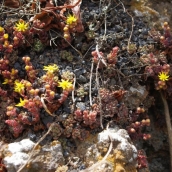
Small shrublet (to 10-15 cm), woody base, often cushion-shaped, with numerous stems. Leaves are clustered towards the tips of the stems and are more or less spathulate or obovate, fleshy and reddish-green, often in tight groups. Flowers ...
















